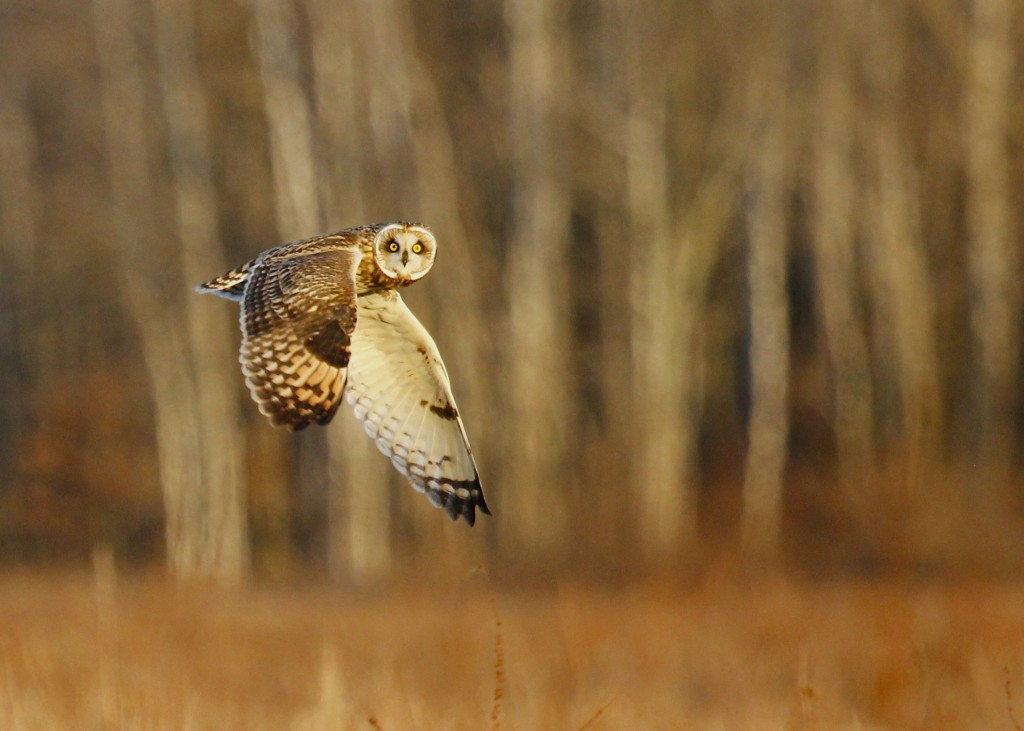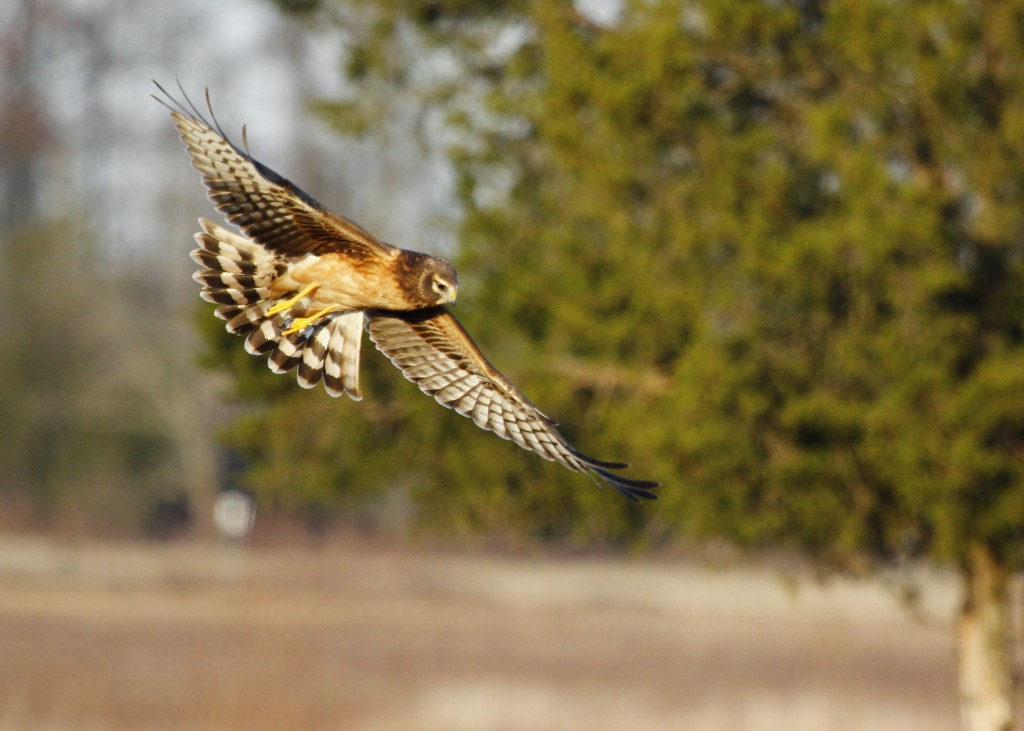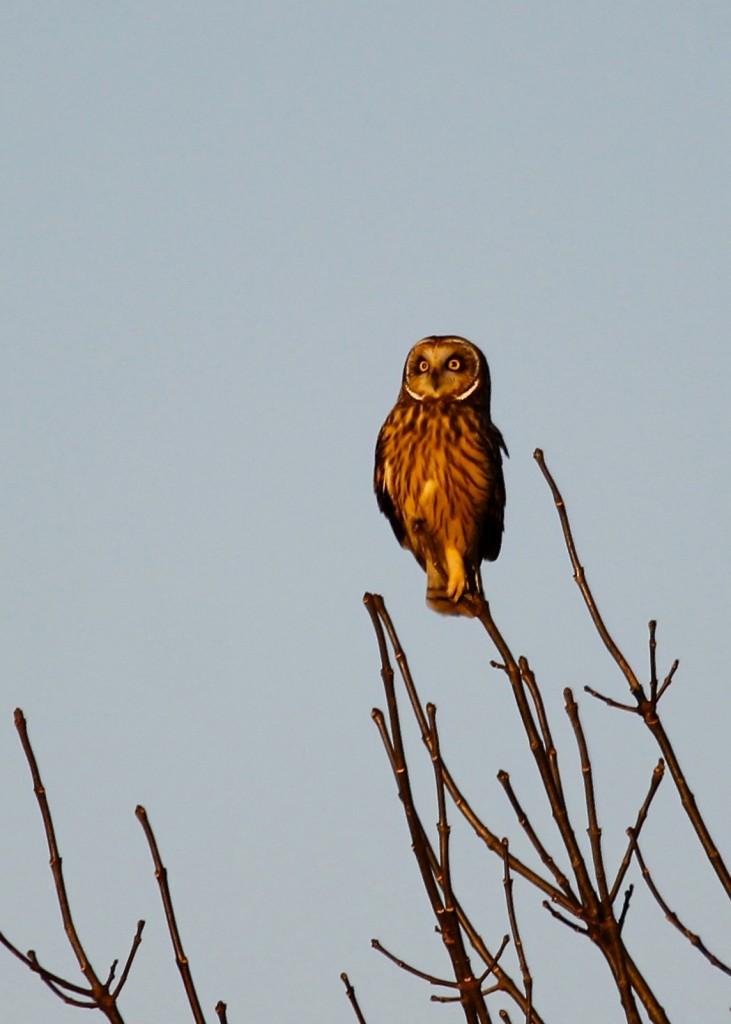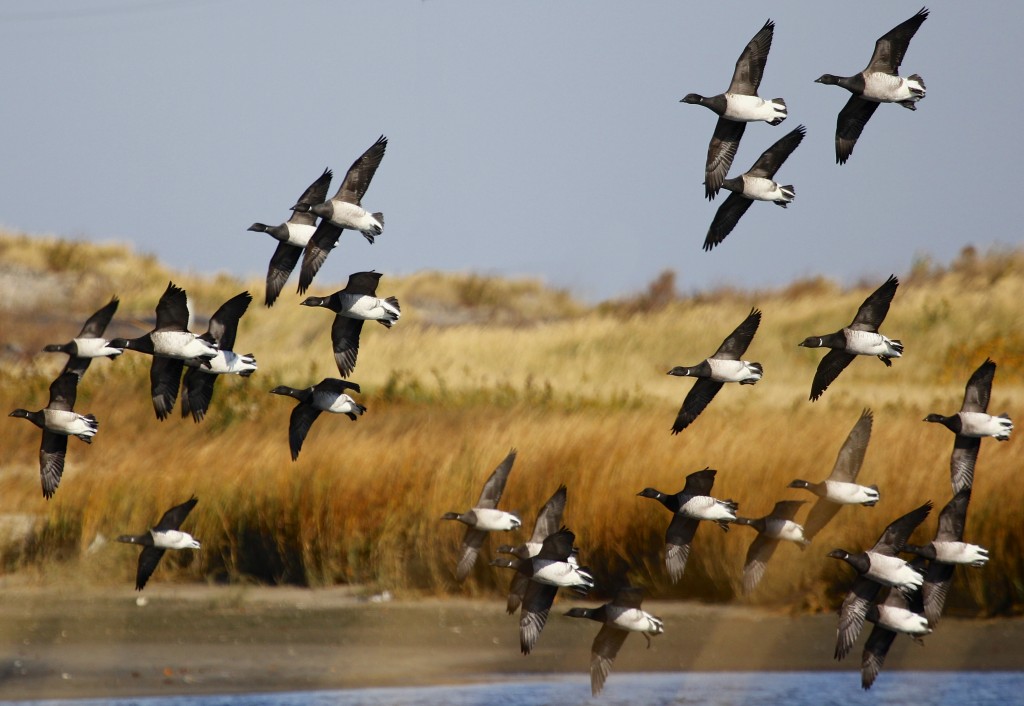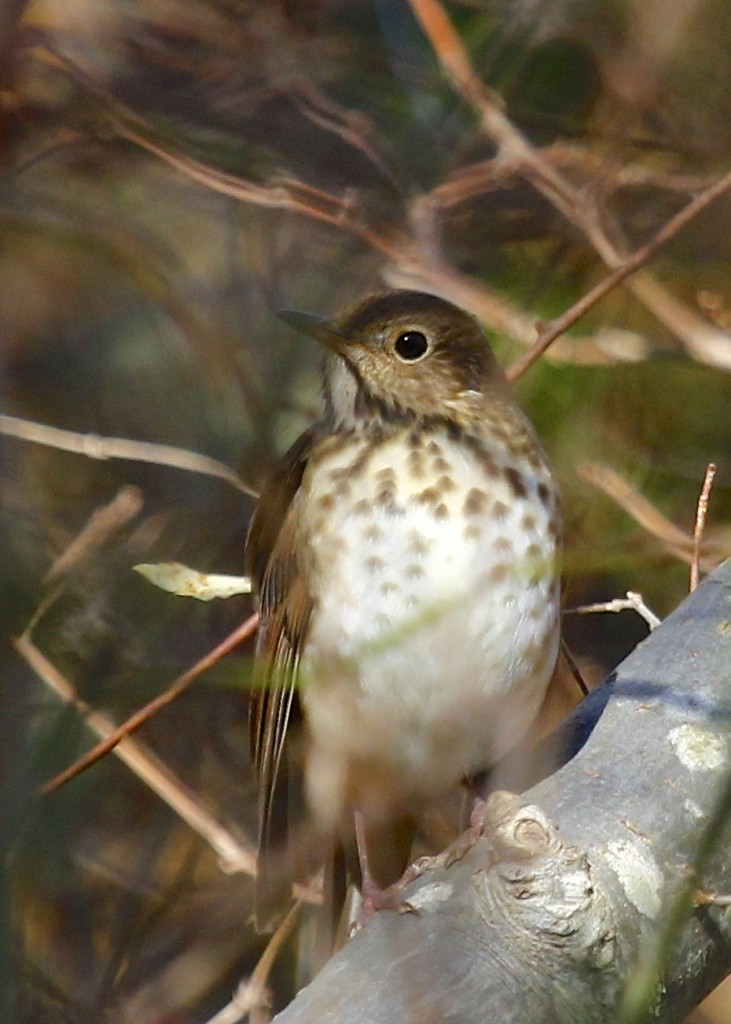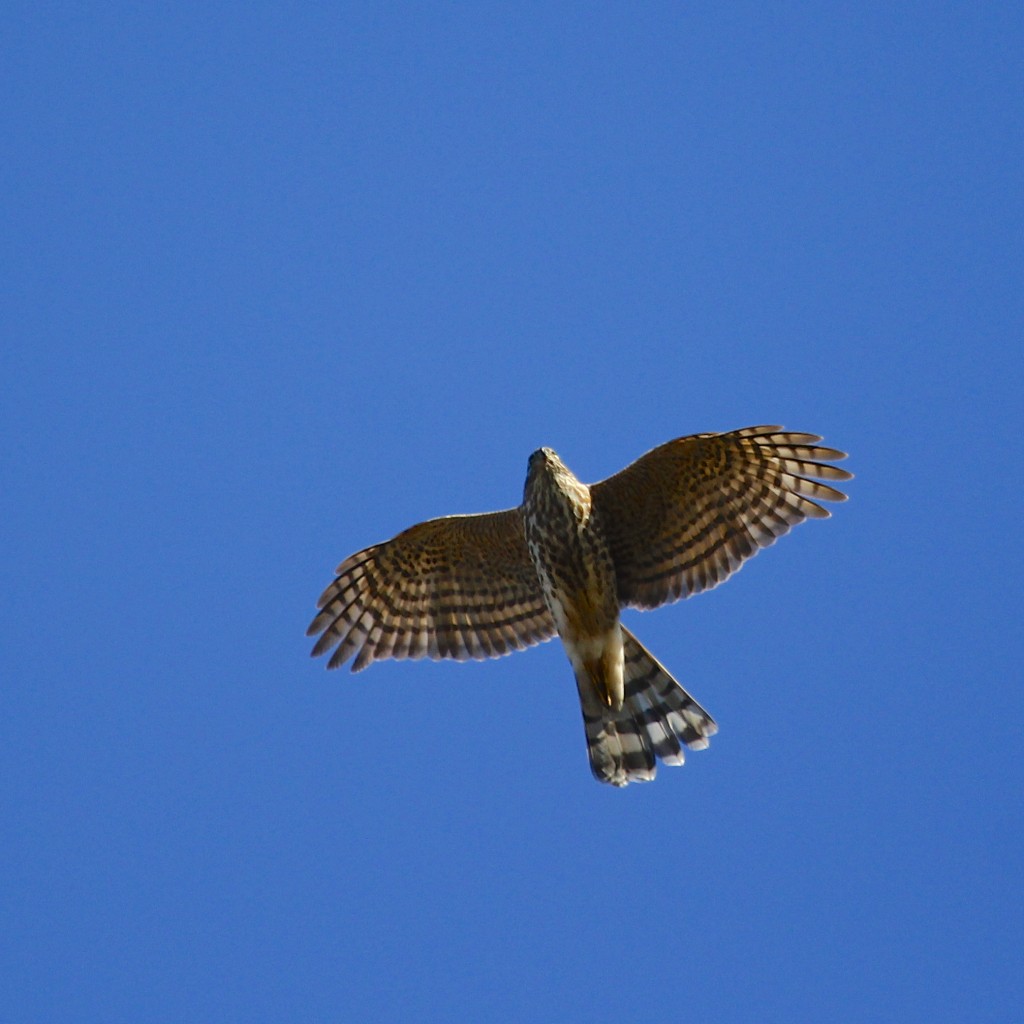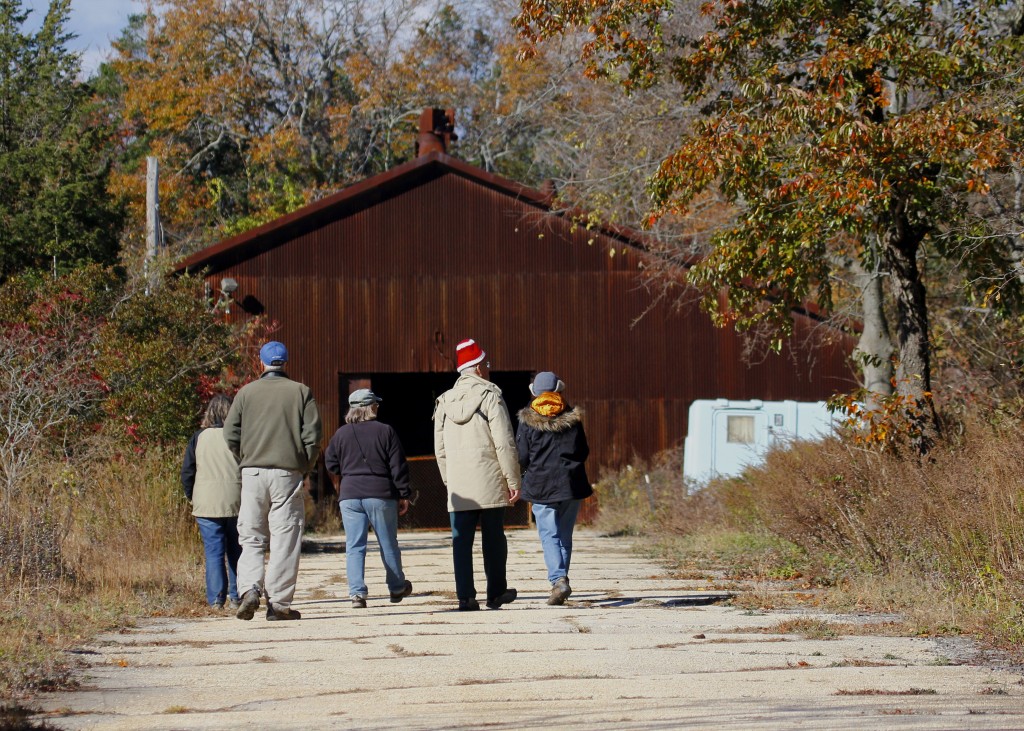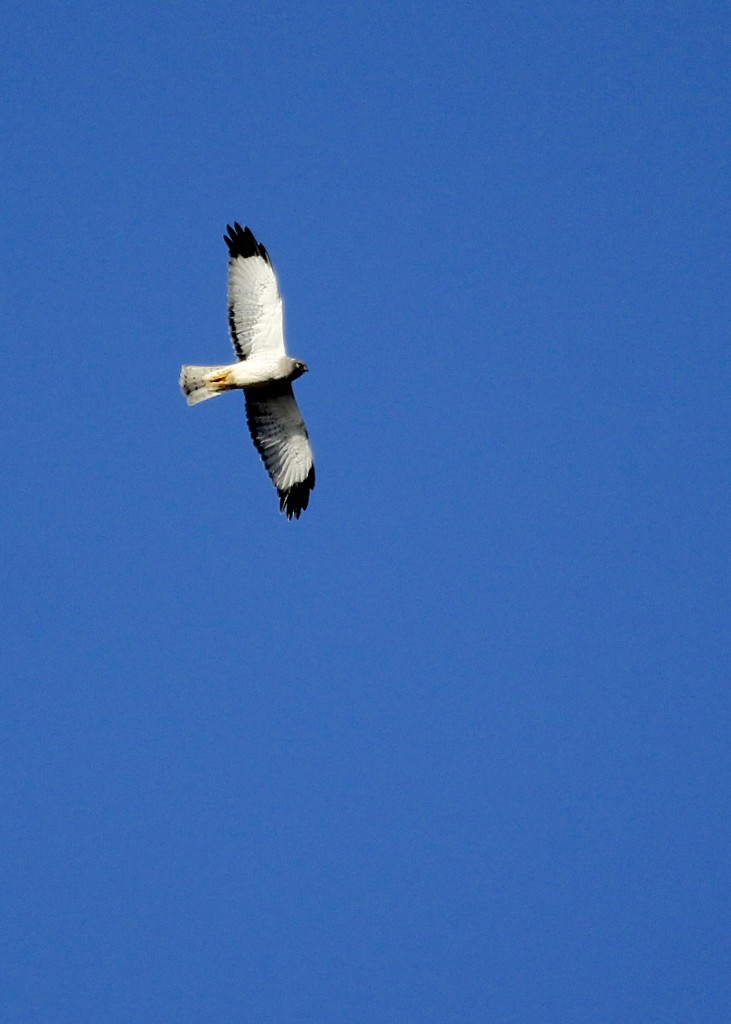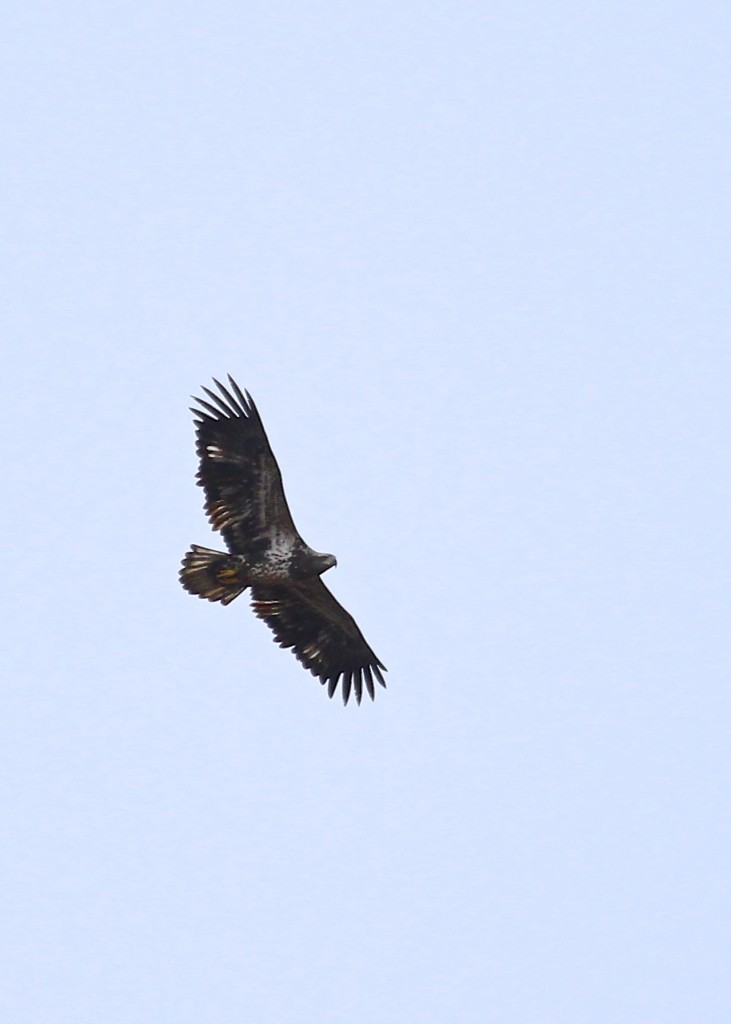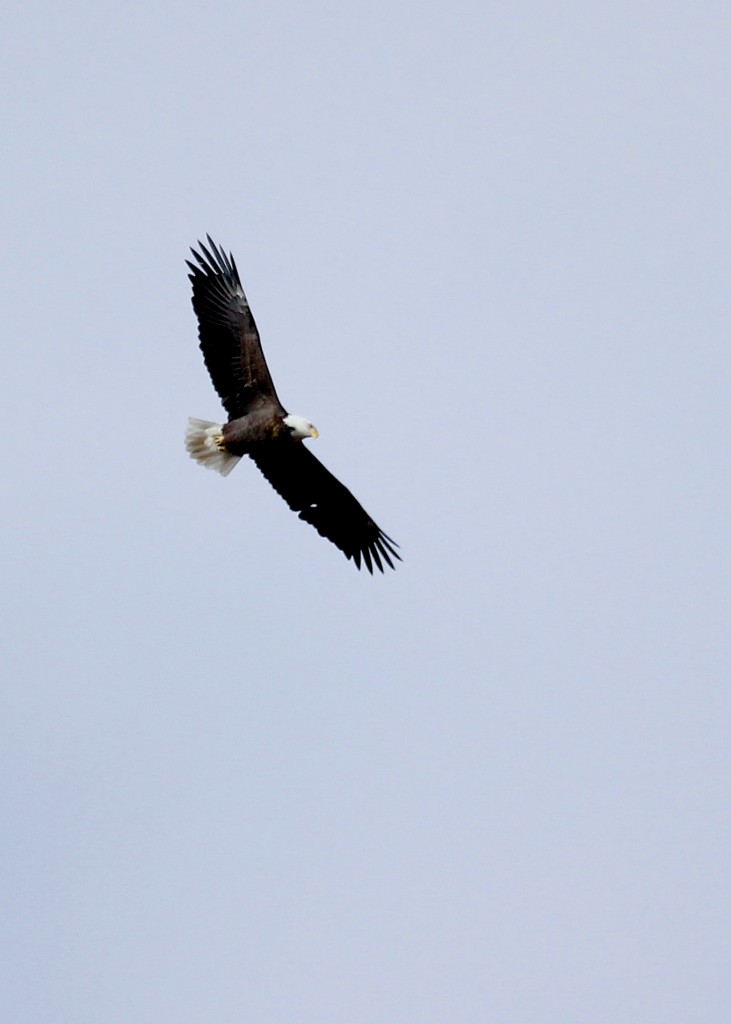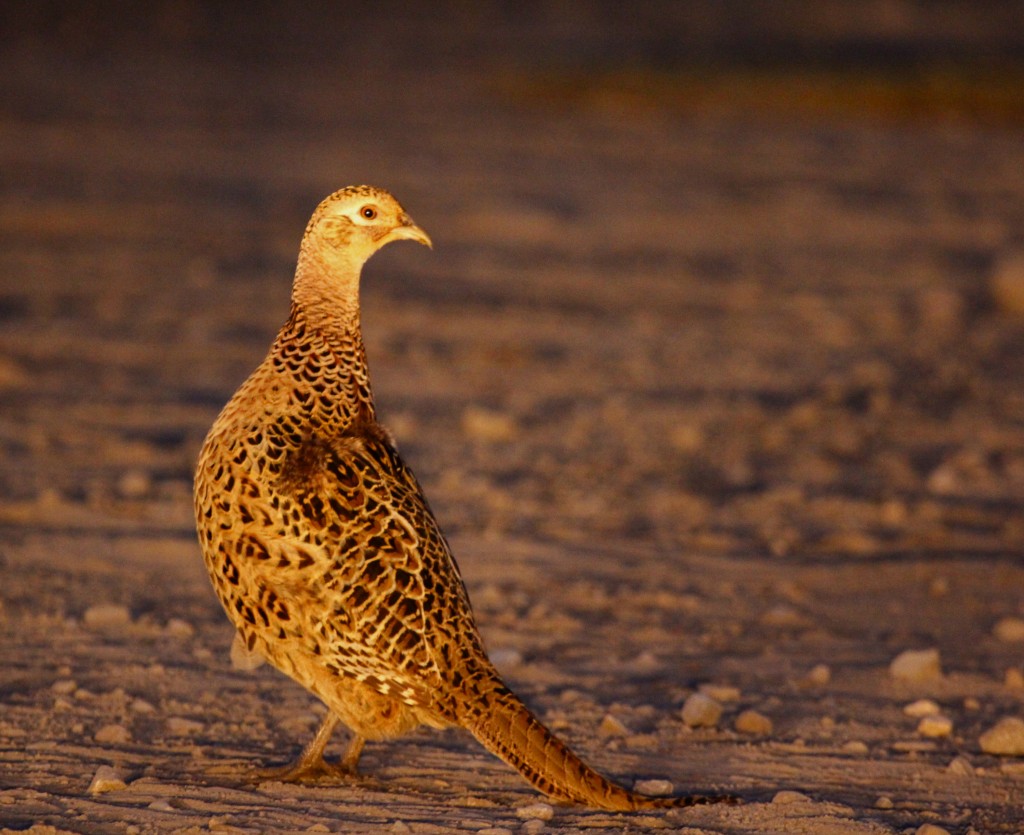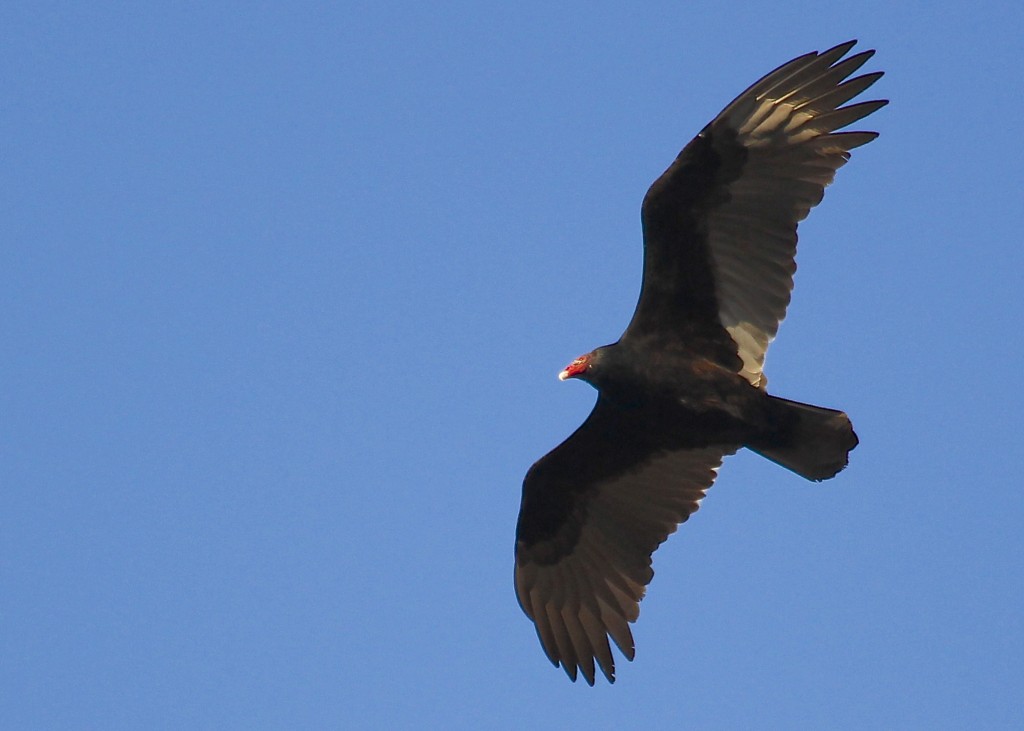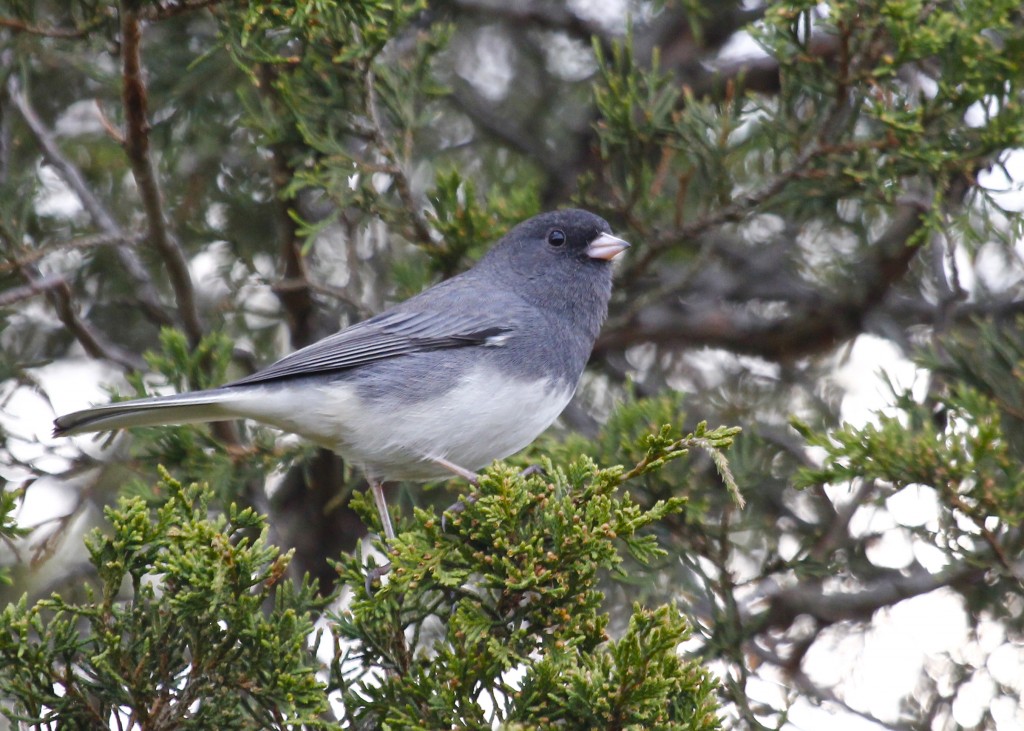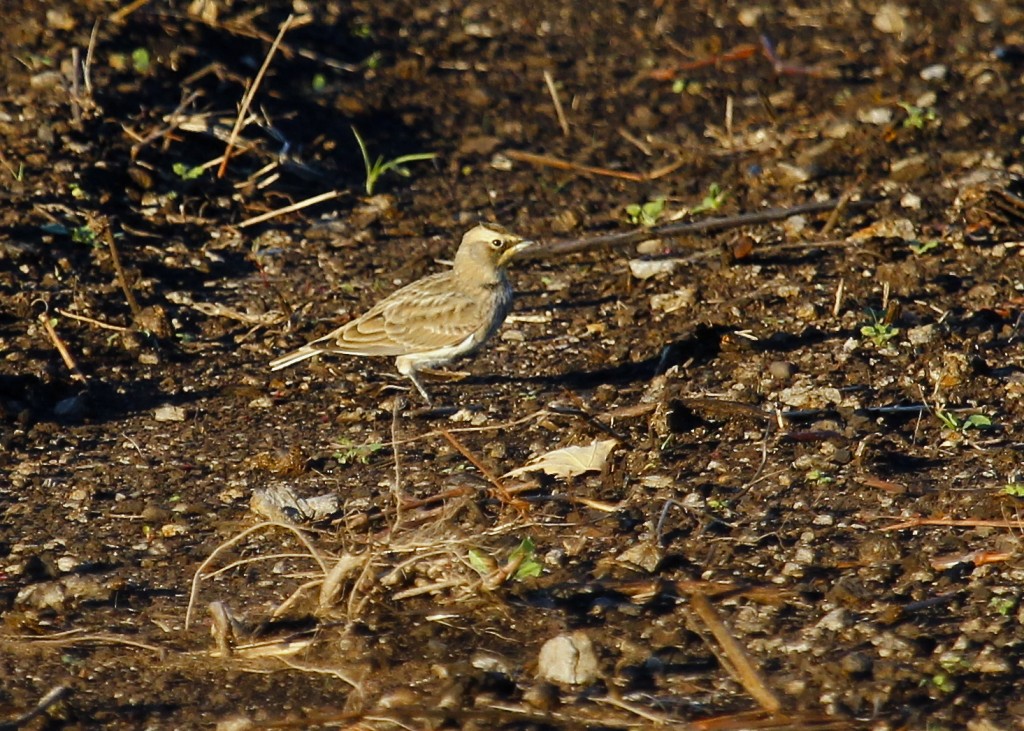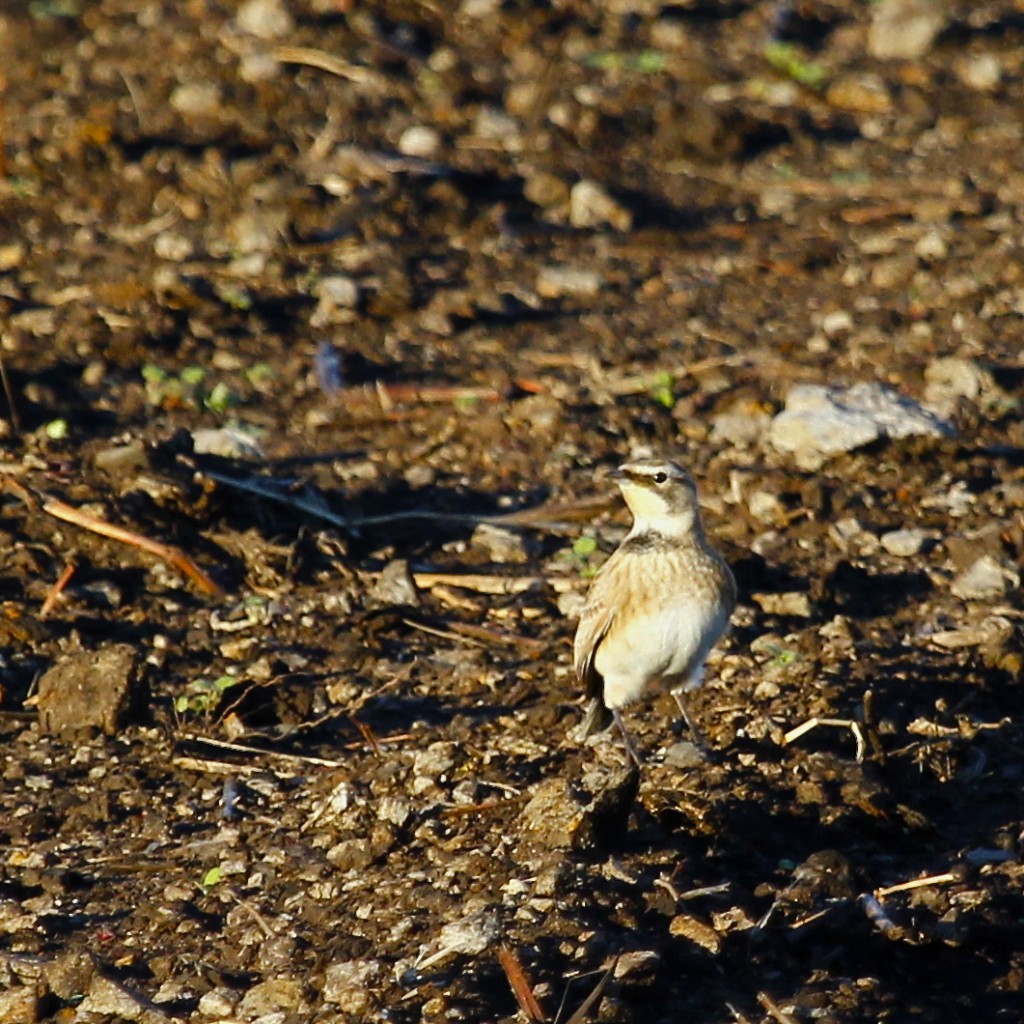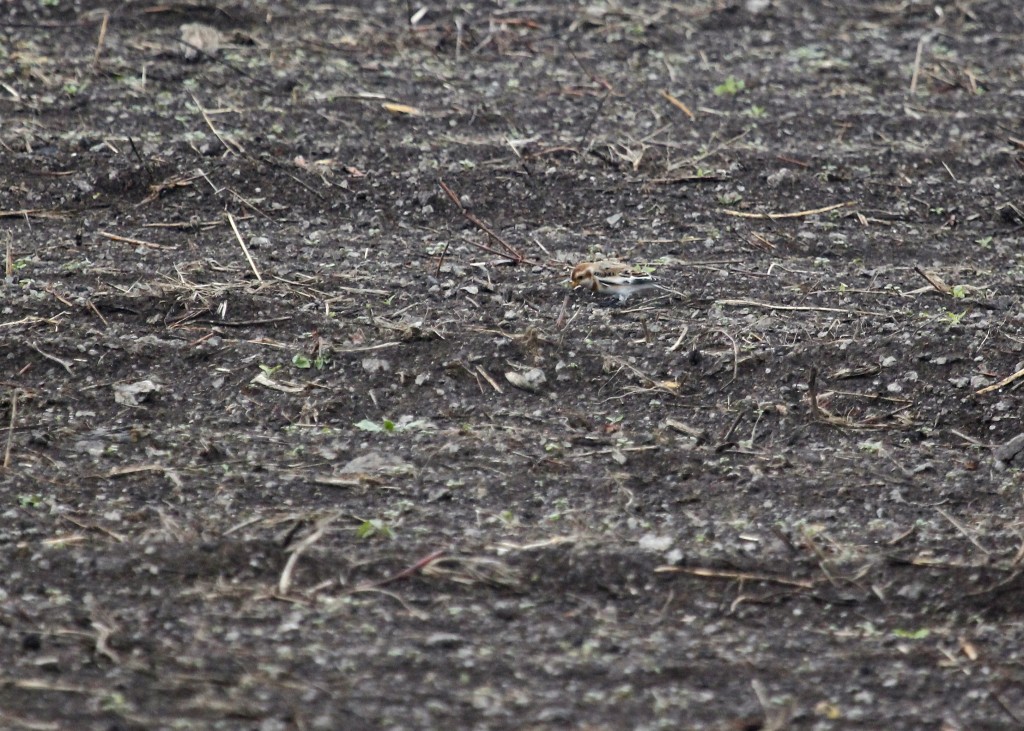I went out to the Shawangunk Grasslands NWR this afternoon in hopes of getting some photos of Northern Harriers. I had seen reports that the Short-eared Owls were back, but only one report where they up up before dark. I walked out to the north blind without seeing much bird activity, just a couple of harriers in distance. I was not in the blind long when I had a Northern Harrier fly in close:
Not much later, at 3:55 pm, I was pleasantly surprised to see a single Short-eared Owl come up from the grasses. I started to click away and more owls came up. The owls put on quite a show, flying all around the blind, tangling with each other and with the harriers too. The light was beautiful, and I clicked away trying not to miss any good opportunities.
I spoke to Scott Baldinger in the parking lot on my way back to my car and he gave a count for the night: He had 8 Short-eared Owls and 6 Northern Harriers in a single sweep, not too bad! What a great night of birding and bird photography!
SATURDAY MORNING
With all the exitement of getting the Short-eared Owl photos on Saturday evening, I never got around to posting about the birding I did on Saturday morning. I made several quick stops just to see what was going on.
Glenmere Lake:
Canada Goose 25
Mute Swan 6
Mallard 1
Bufflehead 1
Common Merganser 1
Ruddy Duck 2
Pied-billed Grebe 5
Ring-billed Gull 1
Pileated Woodpecker 1
White-breasted Nuthatch 1
Lower Wisner Road:
Canada Goose 300

Turkey Vulture 1
Northern Harrier 1
Red-shouldered Hawk 1
Red-tailed Hawk 2
Rock Pigeon 20
Red-bellied Woodpecker 1
Downy Woodpecker 2
Northern Flicker 2
Northern Shrike 1
Blue Jay 6
American Crow 35
Northern Mockingbird 5
European Starling 50
Field Sparrow 2
Song Sparrow 4
Dark-eyed Junco 1
Common Grackle 12

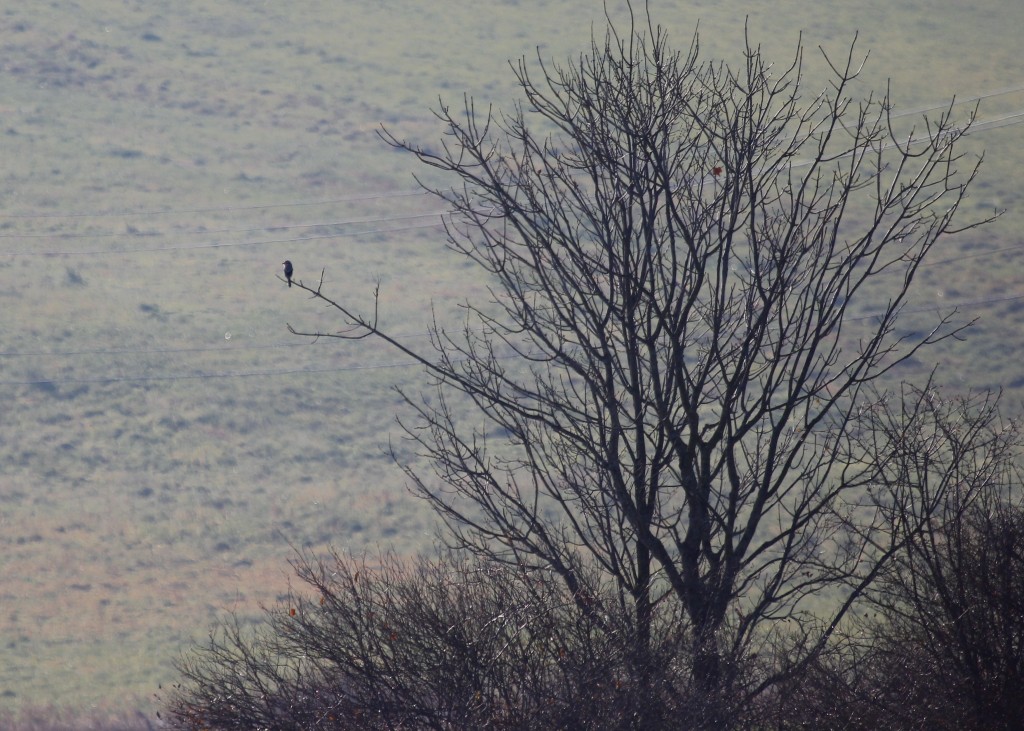
Warwick Town Hall Pond:
Canada Goose 10 Gadwall 9 Northern Pintail 2
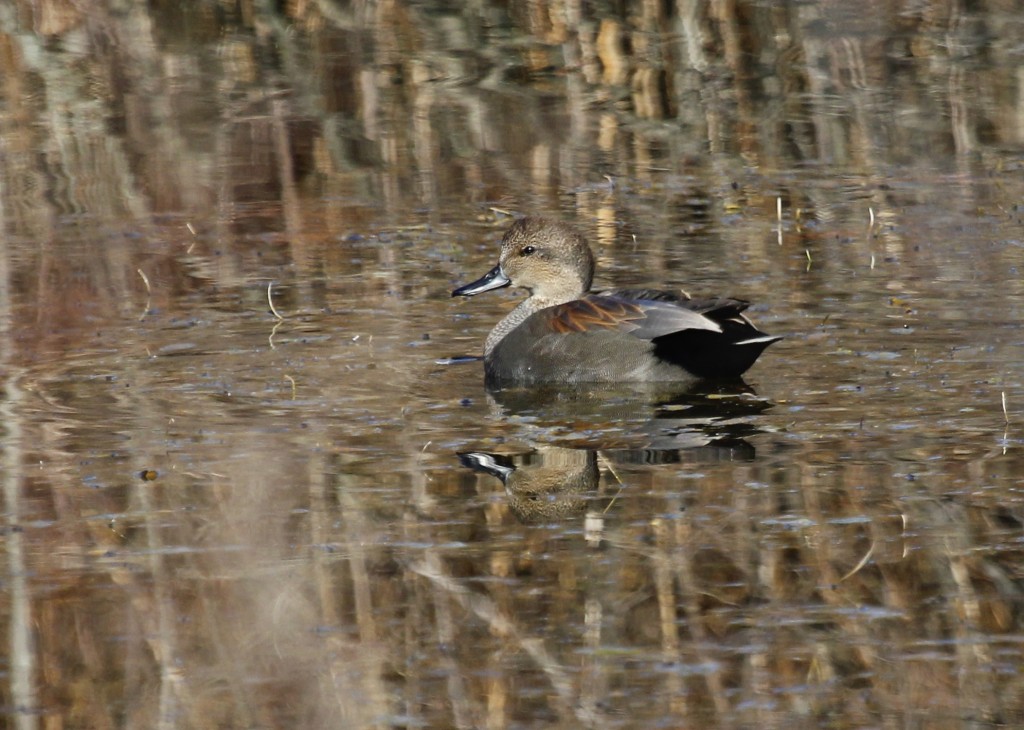
Skinner Lane:
Canada Goose 55
Red-tailed Hawk 3
Killdeer 1
American Crow 250
Horned Lark 40
American Goldfinch 1
Citgo Pond Trail (Goshen):
Canada Goose 10
Mallard 35
Northern Shoveler 2
Green-winged Teal 8
Red-tailed Hawk 1
Red-bellied Woodpecker 1
Downy Woodpecker 2
Blue Jay 2
American Crow 25
Black-capped Chickadee 2
Song Sparrow 6
Swamp Sparrow 2
White-throated Sparrow 1
Dark-eyed Junco 4


